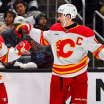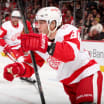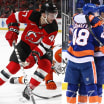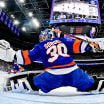"This will give our fans a new look into the game and our broadcasters yet another way to tell stories," Commissioner Bettman said. "Fans will be able to watch the Stanley Cup Playoffs this year and all games next year in a way that years ago nobody could have imagined."
Commissioner Bettman also said the player-tracking and puck-tracking technology will be utilized this weekend by NBC and Sportsnet during the 2020 NHL All-Star Skills presented by New Amsterdam Vodka on Friday and during the 2020 Honda NHL All-Star Game on Saturday at Enterprise Center (8:15 p.m. ET; NBC, CBC, SN, TVAS).
"It'll be as a fan and a viewer what you want it to be," Commissioner Bettman said. "You'll be able to watch the game as you've always watched it traditionally if that's what you want. There will be broadcast enhancements that the broadcasters can use either on the primary screen or on secondary screens, and you'll see some of that this weekend as well. And there'll be more data than ever before."
The NHL announced during All-Star Weekend last year in San Jose that player-tracking and puck-tracking technology would be implemented this season. It began working on the technology in 2013 and testing began at the 2015 NHL All-Star Game in Columbus. It was tested at the 2016 World Cup of Hockey in Toronto and at the 2018 All-Star Weekend in Tampa Bay before the NHL tested it during two regular-season games at Vegas in January 2019. It was tested again at the 2019 All-Star Weekend in San Jose.
The technology will include 14-16 antennae installed in the arena rafters; four cameras to support the tracking functionality; one sensor placed on the shoulder pads of every player on each team; and 40 pucks manufactured with a sensor inside.
Commissioner Bettman said the technology will generate 200 data points per second for the players and 2,000 data points per second for the puck.
"So in terms of getting inside the game, telling stories, as a fan building in to get what you're interested in, you're going to be able to do more things than ever before and even imagined," Commissioner Bettman said.

















